Witchcraft 101: What is a Witch? and What Kind are You?
When I first started identifying with the word witch, it felt both electrifying and terrifying. Maybe you’ve felt that too. For centuries, “witch” has been used as a weapon to silence women, to demonize outsiders, and to enforce conformity. But today, more and more of us are reclaiming it.
So let’s unpack what it really means to be a witch in the modern world. We’ll go beyond the myths, the stereotypes, and the patriarchy.
This guide will cover:
The definition of a witch and witchcraft (simple + practical)
The history of the word witch and how it became stigmatized
The connection between witchcraft and feminism
How to know if you’re a witch (hint: you probably already are)
Ways to discover your personal witchy path
Different types of witches for inspiration
By the end, you’ll have more than just an understanding of what witchcraft is. You’ll have a clearer picture of how you might walk this path in your own way.
✨ What Does it Mean to Be a Witch?
At its core, a witch is someone who recognizes their own power and chooses to use it with intention.
You don’t necessarily need a coven, a magical bloodline, or an Instagram-ready altar. You don’t have to look or practice a certain way. Witchcraft is deeply personal, and your personality, values, and environment shape it.
For me, witchcraft is:
🌱 Honoring the earth and the sacredness of the natural world
🔮 Working with energy, intention, and creativity
🌙 Aligning with the rhythm of the moon and the seasons
🪄 Choosing to live with awareness, purpose, and magic
This is why definitions vary: everyone likely defines it based on how they practice. Some people see witchcraft primarily as a spiritual practice, others view it as an art form, and others emphasize it as a science of energy and consciousness. I like to say it’s all three — science, art, and spirituality — woven together.
🔮 What is Witchcraft?
If being a witch is about claiming your power, then witchcraft is how you work with that power.
Think of it as a toolkit: spells, rituals, divination, herbs, crystals, meditation, and intentional actions. The specifics vary from witch to witch, but the essence is the same. You use your energy to create change in your life and the world around you.
Aleister Crowley defined magick as “the art of causing changes in consciousness in conformity with the will.” Even though the source is a bit controversial, I like this because it reminds us that magic isn’t just about flashy rituals. It’s also about everyday choices. A cleansing bath can be a spell. Journaling your intentions can be a spell. Whispering a prayer over your morning tea can be a spell.
📚 A Brief History of the Word Witch
To understand why calling yourself a witch can feel so loaded, we need to look at history.
For thousands of years, people across various cultures have practiced folk magic, which encompasses healing with herbs, divination, seasonal rituals, and veneration of ancestors. These practices weren’t separate from everyday life. They were woven into the fabric of survival and community care.
But with the rise of patriarchal structures and Christianity in Europe, the word witch (and variations of it) became twisted into a slur. The witch hunts of Europe and later Salem turned healers, midwives, landowners, and spiritual practitioners into targets. Historians estimate that tens of thousands (primarily women, though not exclusively) were executed, often under accusations that had more to do with power and property than actual magic.
The stereotype of the witch—ugly, evil, dangerous—was manufactured to keep people afraid and compliant. But this lie reflected a deeper societal fear: that of people, especially women, wielding power outside sanctioned systems.
Witchcraft and Racism
It’s also important to note that many of these stereotypes were rooted not only in misogyny but in antisemitism and racism. The image of the “hooked nose” witch, for example, directly draws from antisemitic caricatures. In medieval Europe, Jews were falsely accused of poisoning wells, spreading disease, or conspiring with the devil. These same accusations of secret pacts, malevolent magic, and child harm were mapped onto people accused of witchcraft.
Likewise, African, Romani, and Indigenous traditions were condemned as “black magic” or “sorcery,” giving colonizers justification to persecute practitioners and erase entire spiritual systems.
The witch, then, was not just a figure of superstition. The witch became a scapegoat, used to demonize women, queer people, African, Romani, and Indigenous communities, and anyone practicing non-Christian traditions, especially Judaism. By labeling these groups as “other” and “dangerous”, authorities reinforced social hierarchies and silenced dissent.
Despite this history of fear and persecution, witches and their practices endured. Folk healers continued to tend to their communities, spiritual traditions survived underground, and stories of witches persisted in folklore and memory. This resilience is part of what gives the word witch its power today.
Recommended Reading:
The recommended sources found at the bottom of the pages linked above.
🌸 Witchcraft and Feminism
To reclaim the word witch is to resist centuries of oppression. Feminists and modern witches often recognize that the very qualities that are often demonized—independence, intimacy with nature, healing wisdom, nonconformity—are sources of strength.
Witchcraft and feminism are intertwined because both challenge the same systems that tried to erase them: patriarchal control, colonial exploitation, and religious dominance. Today, the witch stands not as a scapegoat but as a symbol of defiance: autonomy, sexuality, creativity, and the refusal to be silenced.
This reclamation also restores the feminine energy that has long been suppressed under patriarchal systems. For centuries, witchcraft was associated with women because it centered on the cycles of nature, the body, and community care, all of which were devalued in favor of hierarchy and domination.
Think of the archetype of the “kitchen witch.” When women were confined to the kitchen, some turned that space into a temple of power, where they could brew teas, mix herbs, and whisper intentions into recipes. Or consider wise women who acted as midwives and healers, often persecuted because their knowledge threatened established systems.
Today, to call yourself a witch is to honor those traditions and to weave them into a modern path of empowerment.
Balancing Sacred Duality
Of course, reclaiming witchcraft goes beyond gender. Just as the witch stereotype was shaped by racism and antisemitism, the work of reclaiming witchcraft must also mean honoring its diverse roots and resisting exclusion. Feminist witchcraft isn’t about gatekeeping; it’s about widening the circle. Anyone, regardless of gender identity, race, or background, can step into their magic.
Witchcraft belongs to all genders. The divine feminine exists in everyone, just as the divine masculine does. Witchcraft is about balancing this duality.
Related: The Principle of Gender
To call yourself a witch today is to stand in solidarity with all those who came before us, those who were silenced by fire, crushing, and drowning, by stigma and ostracization, and by colonization, conquest, and slavery. It is also to declare that we are no longer afraid to live in our power.
To claim the title of witch today is to say: I will NOT be silenced. I will NOT be diminished. My power is NOT dangerous; it is necessary.
Recommended Reading (affiliate links):
🌟 So… Are You a Witch?
When someone asks me if they’re a witch, I will always answer: Yes.
Because if you feel the pull to ask this question, and if you recognize your power, and are ready to weave that power into the world with intention, you are already walking the witch’s path.
You don’t need permission, a title, or a certificate. You don’t need to prove your worth or master every magical skill. If you feel drawn to witchcraft, that’s your intuition speaking. If you want to practice witchcraft, then you’re a part of it.
But just in case you need a nudge, here are some signs you might be a witch:
You feel deeply connected to nature and seasonal cycles.
You are drawn to crystals, tarot, astrology, and/or herbs.
You notice energy in people or places (good vibes/bad vibes).
You’ve felt “different” or like an outsider, but in a way that feels powerful.
You crave rituals, symbols, and deeper meaning.
You’re curious about magic and can’t stop asking questions about it.
If you nodded along to even one of these, congratulations: you’re already walking the Witch Path.
Related: Coming out of the Broom Closet
🧙♀️ Discovering Your Witchy Path
In the post How to Get to Know Yourself and Your Goals, you explored your strengths, values, and motivations. Now it’s time to take those insights and connect them with different types of witchcraft.
Think about the patterns you noticed in your self-reflection. How might those qualities guide the way you practice?
Here is a refresher of the journal prompts; you might have some new insights to add.
Skills – What are you naturally good at?
Interests – What fascinates you?
Values – What causes do you care about deeply?
Motivators – What drives you?
Personality – Are you calm, fiery, introspective, adventurous?
Location – Do you live in a city apartment, coastal town, forest, or desert?
Now connect the dots:
A gardener who values sustainability may be drawn to green witchcraft.
A writer might find their magic in crafting spells, journaling, or word-based sigils.
A talented cook could thrive in kitchen witchcraft by weaving intention into meals, teas, and daily chores.
A person who lives by the ocean may enjoy work with the magic of the ocean as a sea witch.
And so on. You don’t have to choose one label or path for the rest of your life. But letting your self-knowledge and your creativity inform your practice gives you a starting point that feels authentic and empowering.
Types of Witches: Exploring Witchcraft Paths
As I said, you don’t have to label yourself, but sometimes exploring witchcraft categories and types of witches can spark ideas and help you know what to research further. Here are a few common ones:
🌿 Green Witch – works with plants, herbs, and the cycles of nature.
RELATED: Green Witchcraft Journal (my book)🍲 Kitchen Witch – brings magic into food, cooking, and the home.
RELATED: The Kitchen Witch's Guide to Healing and Self-Care (my book)🌌 Cosmic Witch – practices with astrology, moon phases, and planetary influences.
🔮 Divination Witch – specializes in tarot, runes, pendulums, and scrying.
🌀 Eclectic Witch – blends different traditions and practices into a unique path.
🌙 Hedge Witch – focuses on spirit work, shamanic journeys, and liminal spaces.
🌊 Sea Witch – works with ocean energy, shells, tides, and water magic.
💻 Tech Witch – blends magic with modern technology (sigils on screens, energy in coding).
Remember: these aren’t boxes to trap you. They’re doorways you can explore. Many witches weave elements from multiple paths.
Inspiration from Pop Culture
You might also reflect on witches in stories or media. Which ones inspire you? Which ones don’t? Pop culture witches, from Hermione Granger to Sabrina to Willow from Buffy, to the Charmed Ones, to the sisters from Practical Magic, and the teenagers in The Craft, can offer clues about what resonates or not for your practice.
While fictional witches don’t reflect real-life witchcraft, they often highlight values like courage, transformation, and community that can inform your path.
🌀 Final Thoughts
To be a witch is to claim your power, your connection, and your truth. Witchcraft is not about fitting into someone else’s mold. You don’t have to look like anyone else or follow a prescribed path. Your witchcraft is yours to define. It’s about remembering that you are already magical, and choosing to live that truth.
Ultimately, witchcraft isn’t just about spells and rituals; it’s a way of living. It’s YOUR way of living in alignment with YOUR skills, interests, and everything else.
That brings us to the next post in this series: The Magical Lifestyle, which will guide you to weave magic into you’re everyday routines.
When you begin to live magically, you’ll find that everything from washing dishes to walking your dog can become a spell.
So, when someone asks me, “Am I a witch?” I always answer: Yes. If you feel it, you are.
✨ Want to go deeper? Download the free Witch Identity Map Workbook with journal prompts, mapping pages, and creative exercises to help you define your unique witchy path.
⬅️ Free Resource
The Witch Identity Map Workbook is your companion for claiming the word witch and discovering what it means for you. Inside, you’ll find reflection prompts, inspiration lists, and space to design your own witch’s symbol, all to help you uncover your magical identity.
When you join the Blog Rewards Program, you’ll unlock this resource and many others designed to go hand-in-hand with my blog posts. It’s my way of saying thank you for being part of this witchy community.
✨ Next up in Witchcraft 101: 9 Tips for a Solitary Practice





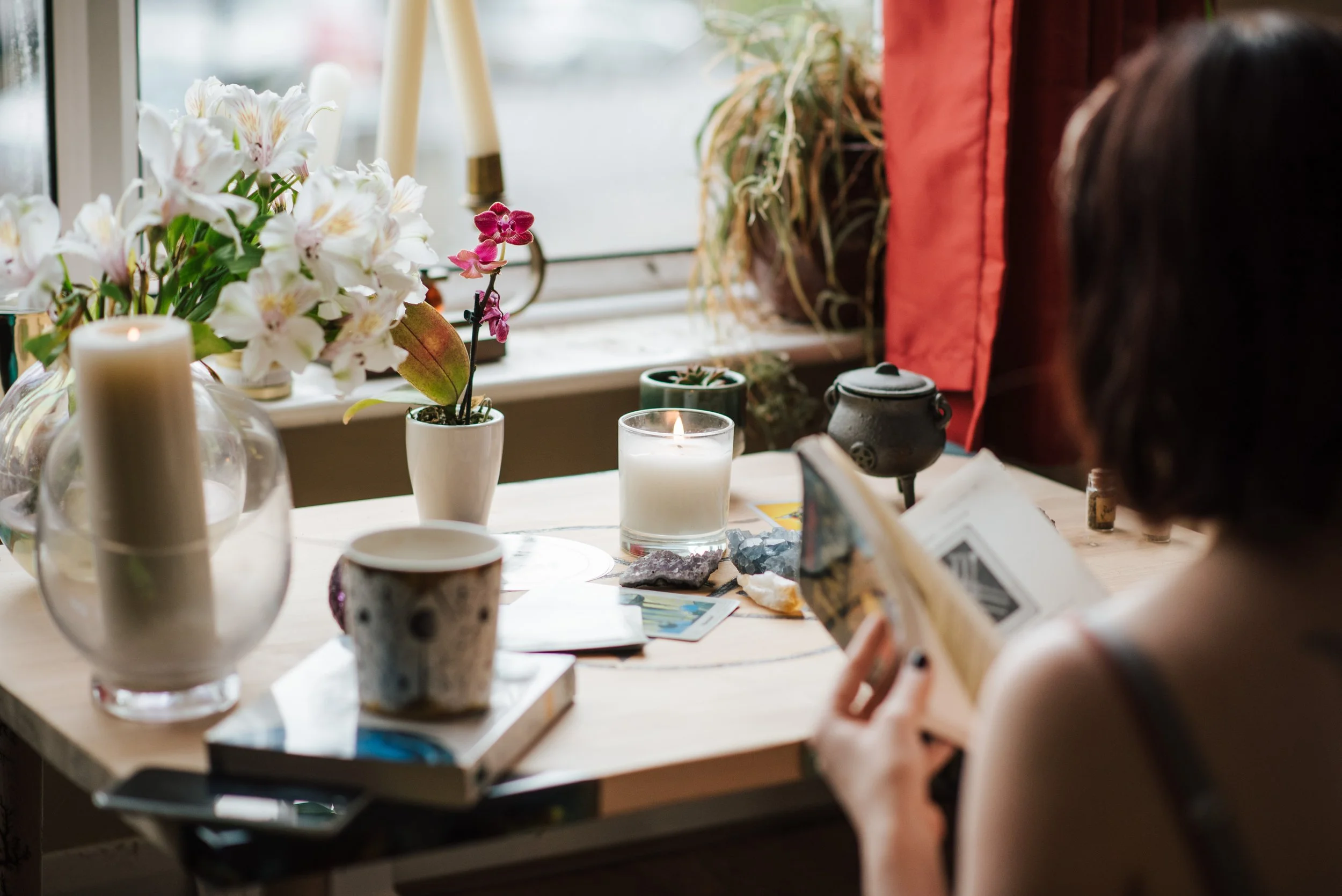
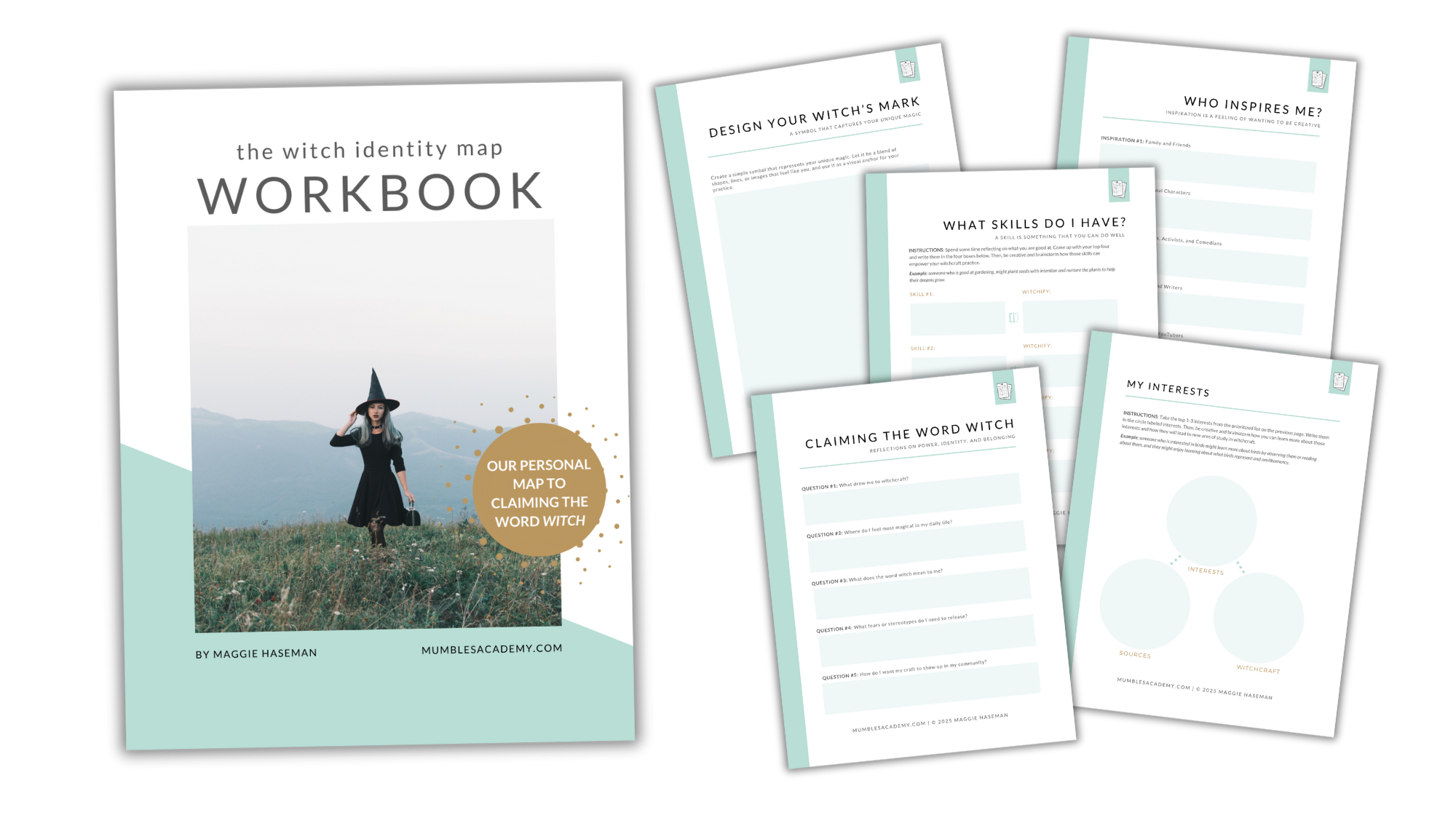
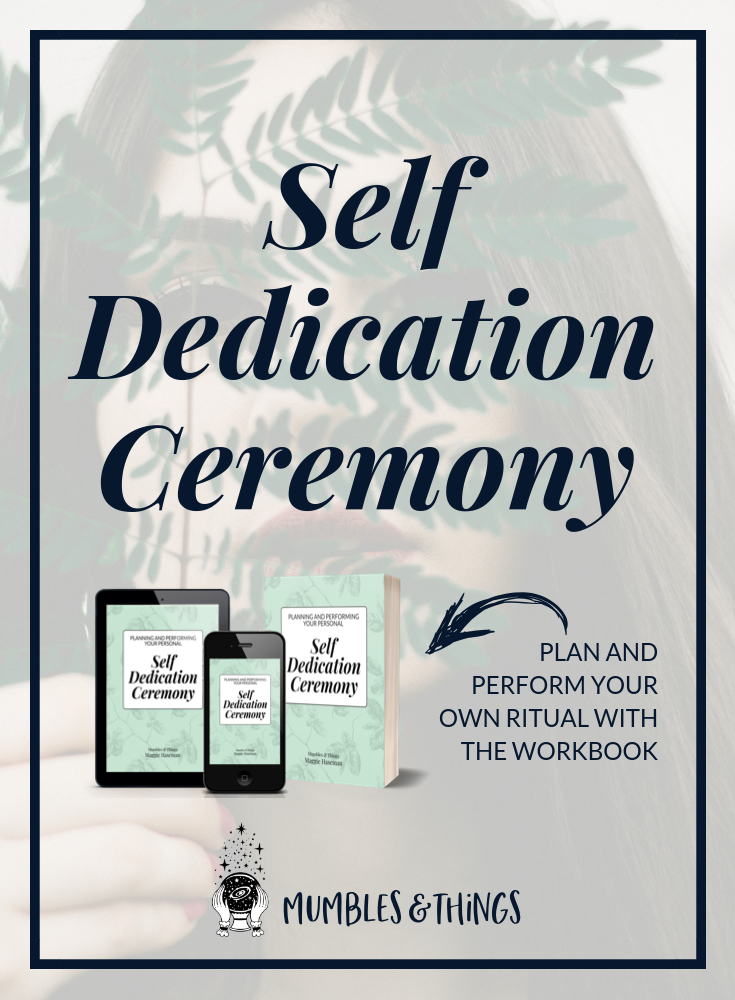
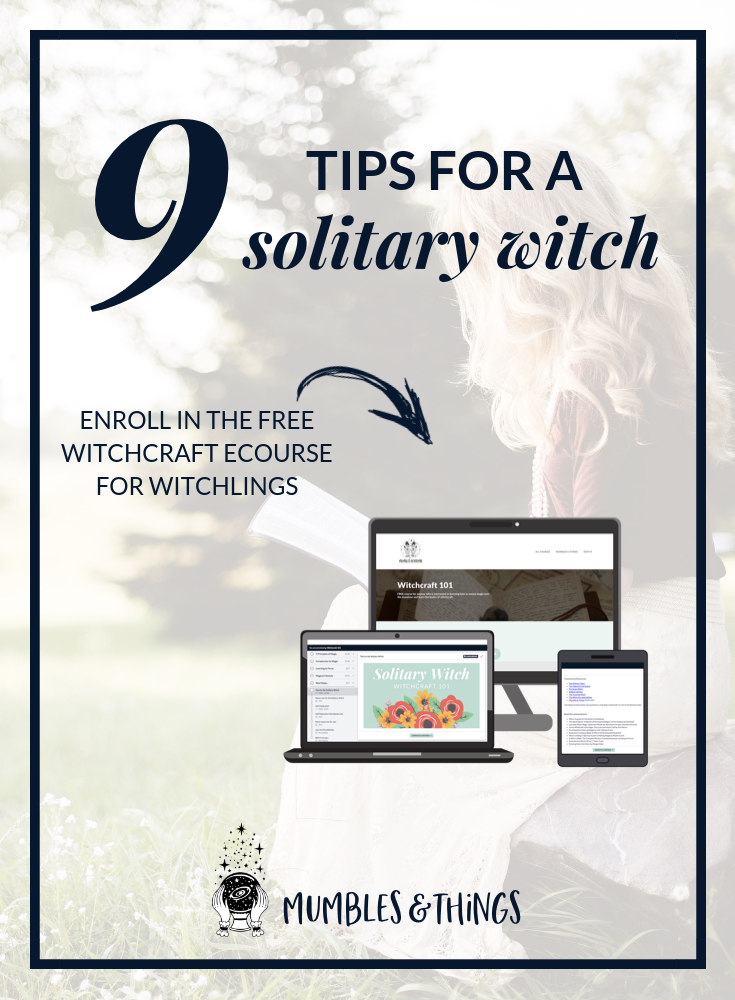
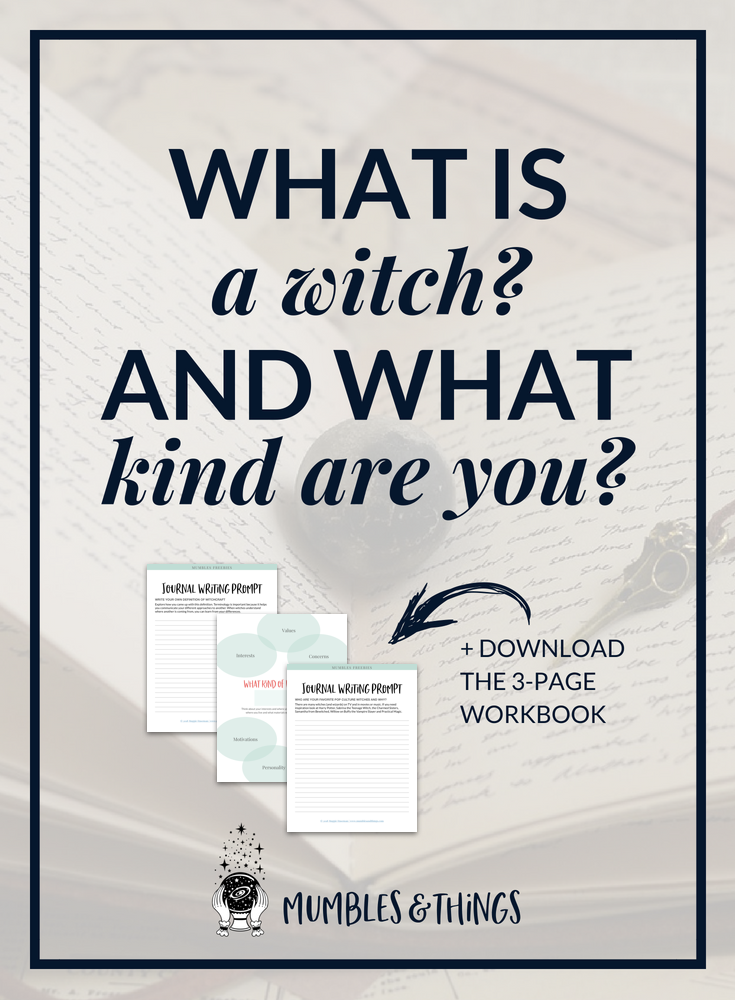




When it comes to magic…You KNOW you could be doing BIG things, but you have no idea what those things are, or worse… you just have no idea where to start! The #1 thing I hear from followers is that they want a clearly defined, STEP by STEP path to witchcraft. Meet Witchcraft 101!